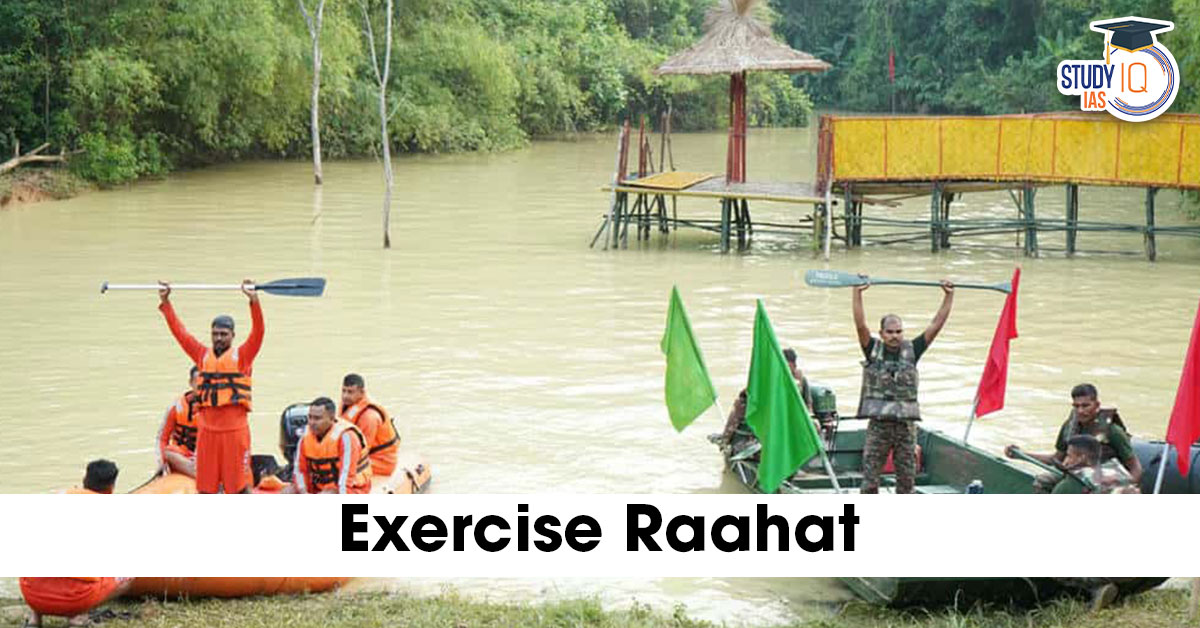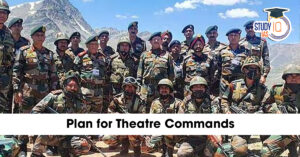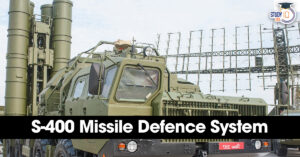Table of Contents
Exercise Raahat, which concluded recently on May 13-15, 2025, in Nagaland. It was conducted between the Indian Army’s Spear Corps and the National Disaster Response Force (NDRF). It was on monsoon preparedness and improving synergy for disaster relief operations. The exercise entailed joint planning, equipment demonstration, and simulation of rescue and medical aid. Read this article to get all about Exercise Raahat, its Key Objectives and Significance.
What is Exercise Raahat?
Exercises Raahat focus on improving civil-military interaction, assessing and developing multi-agency coordination, showcasing operational preparedness, and practising real-time responses to different natural disasters.
Key Objectives of Exercise Raahat
- To enhance civil-military coordination in disaster response.
- In order to assess and improve multi-agency coordination for massive natural disasters.
- To display operational preparedness of the Indian Army and NDRF.
- To reproduce real-time reaction to floods, landslides, and infrastructure destruction.
Indian Army and NDRF join forces for Disaster Relief Exercise Raahat
The Indian Army Engineers of Spear Corps and the National Disaster Response Force (NDRF) carried out a three-day joint exercise to enhance disaster preparedness prior to the monsoon season, officials added. The exercise, named ‘Exercise Raahat’, ended at Rangapahar Military Station in Dimapur, Nagaland, on Thursday, according to a Defence press release.
The first two days dealt with strategic planning and scenario briefing, a Defence spokesperson explained, adding that both agencies’ experts analysed actual case studies, participated in interactive group discussions, and discussed innovative response approaches.
The last day included a lecture-demonstration, where Army Sappers and NDRF officials showcased cutting-edge disaster relief equipment and conducted mock rescue and medical operations, the official added.
Earlier Raahat Exercises: Background
The title “Exercise Raahat” has previously been employed in analogous Humanitarian Assistance and Disaster Relief (HADR) exercises. Recently, for example, a large-scale joint simulation with the Indian Army and NDRF was conducted in Assam to enhance coordination during natural disasters such as floods and earthquakes. The initial Exercise Raahat took place in Rajasthan in 2016, with primary emphasis on responding to earthquakes.
It is important to note that Operation Raahat in 2015 was a major evacuation operation to bring out individuals from war-torn Yemen, whereas Exercise Raahat is a disaster relief readiness exercise practised within India.
Also Read: Disaster Management in India
Significance of Exercise Raahat
The significance of Exercise Raahat, being a regular joint Humanitarian Assistance and Disaster Relief (HADR) exercise in India, is multidimensional and pivotal to national readiness:
Improved Civil-Military Cooperation
It enhances the essential synergy and rapport between the defence forces (such as the Indian Army’s Spear Corps) and civilian organisations (such as the National Disaster Response Force – NDRF, and State Disaster Response Forces – SDRF). It guarantees improved coordination in real-time disaster responses, where free-flowing collaboration is crucial.
Enhanced Multi-Agency Coordination
Exercises engage all stakeholders, ranging from the military to NDRF, SDRF, civil administration, medical teams, and even NGOs. This helps in developing a common approach, facilitating communication, resources, and operations when many agencies are called in for relief efforts.
Monsoon Preparedness
By conducting exercises such as the recent one in Nagaland with a specific focus on the monsoon, Exercise Raahat goes a long way in ensuring improved preparedness for foreseeable catastrophes such as floods and landslides that are frequent in much of India.
Operational readiness and skill development
These drills give a window for officials from various agencies to rehearse their individual functions and tasks in a mock situation. This refines their skills, puts their equipment to the test, and determines the effectiveness of improvements before an actual disaster occurs.
Testing of New Solutions and Technologies
Exercise Raahat provides an opportunity for showing and testing new technologies and innovative response strategies that can make relief operations more effective and efficient.
Real-time Response Simulation
Through simulation of real-time disaster situations, the exercises facilitate the building and strengthening of Standard Operating Procedures (SOPs) and the verification that response systems are rapid and efficient. This involves features such as evacuation, provision of medical assistance, establishment of relief camps, and restoration of communications.
Community Awareness and Resilience
The partnership between civilian and military agencies during these exercises can also contribute to building trust and awareness among the local communities, leading to overall disaster resilience.
National Dedication to Disaster Risk Reduction
Exercise Raahat supports India’s overall dedication to disaster risk reduction, as prescribed in guidelines such as the Sendai Framework for Disaster Risk Reduction, demonstrating a proactive engagement in reducing the effects of natural calamities.


 Theaterisation of the Indian Armed Force...
Theaterisation of the Indian Armed Force...
 Industrial Accidents in India: Reasons, ...
Industrial Accidents in India: Reasons, ...
 S-400 Missile Defence System, Features o...
S-400 Missile Defence System, Features o...

























